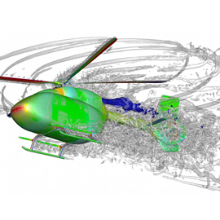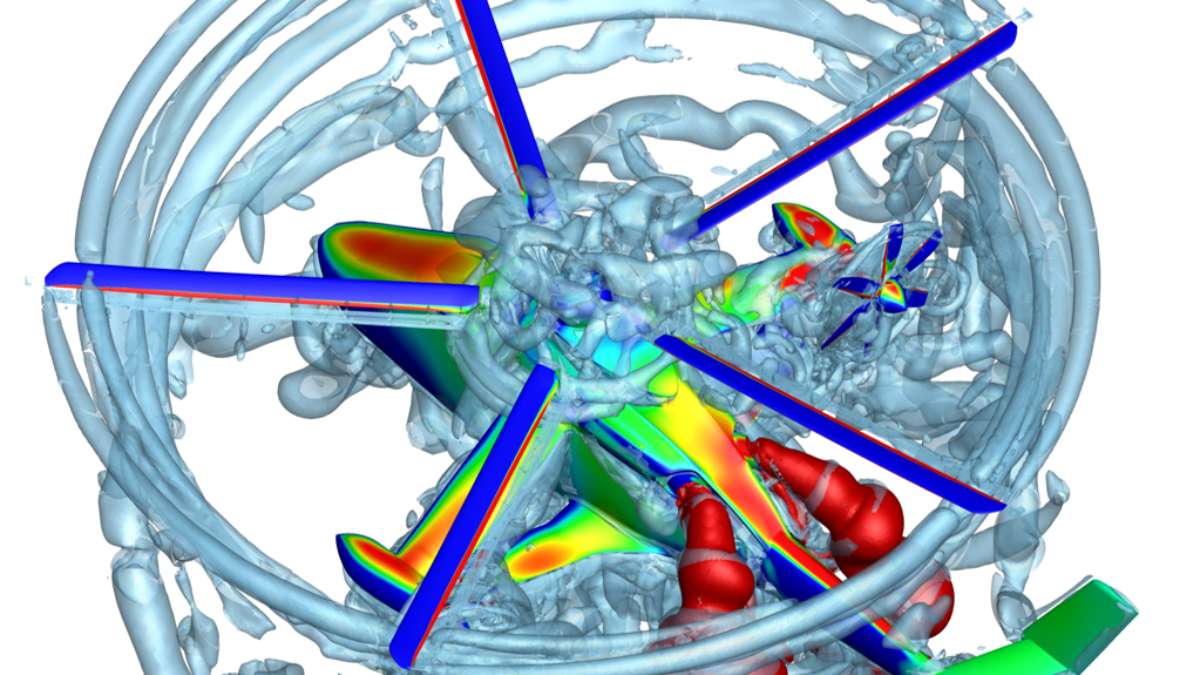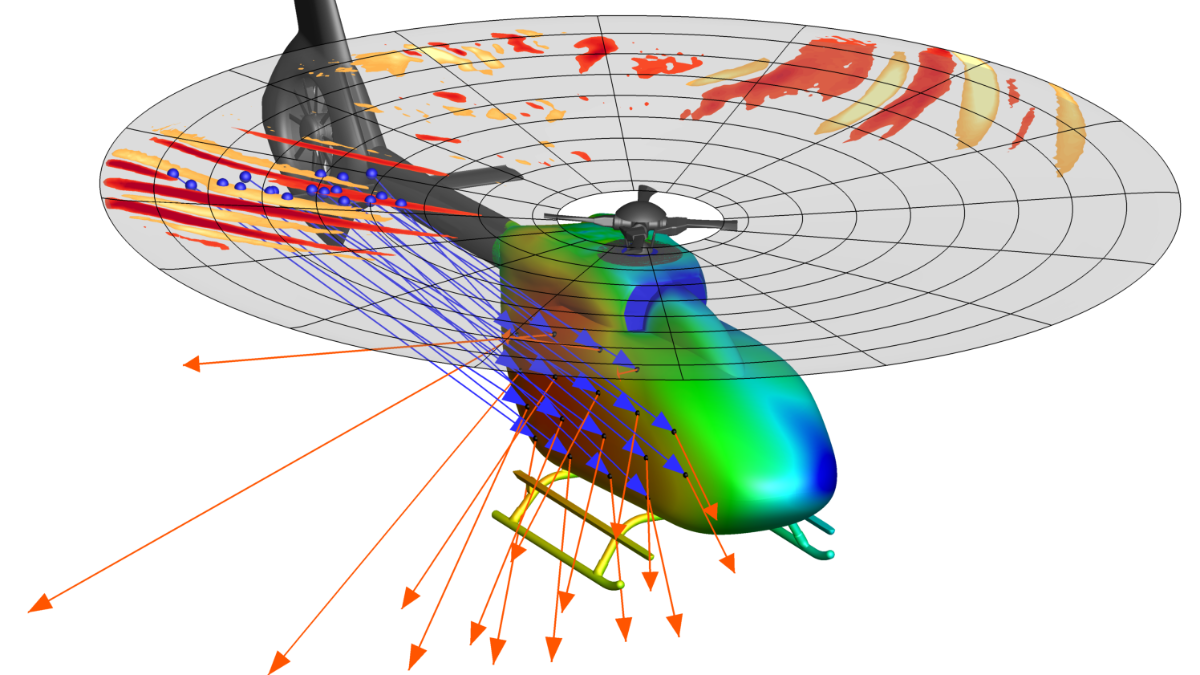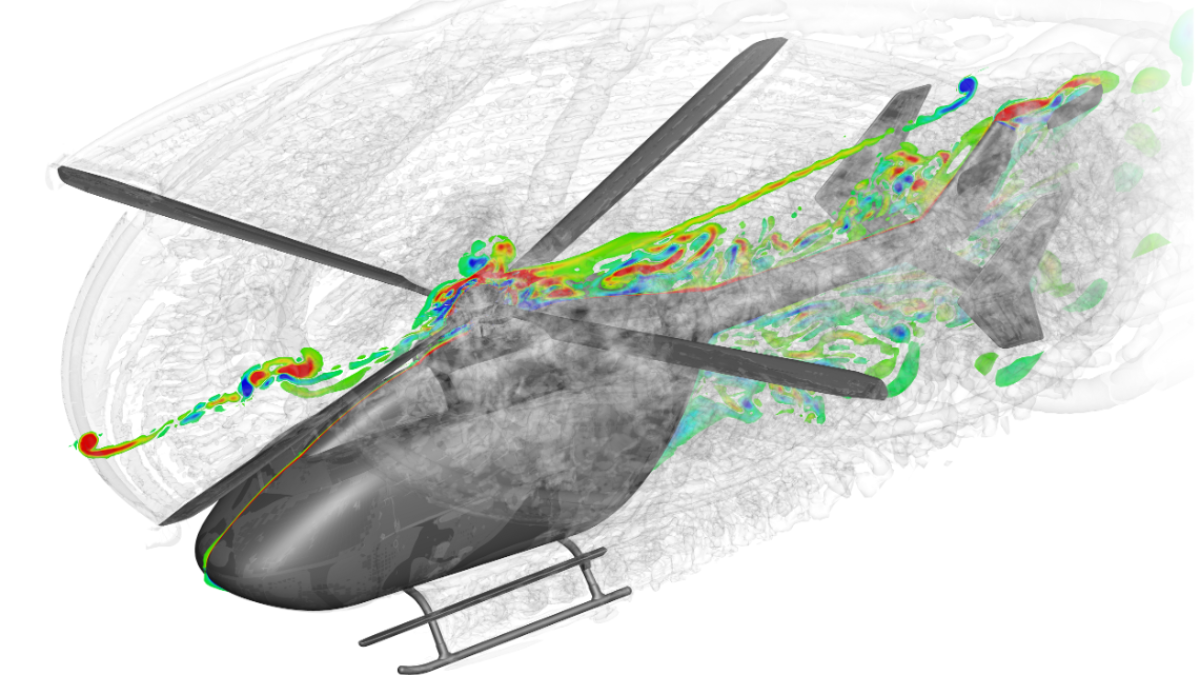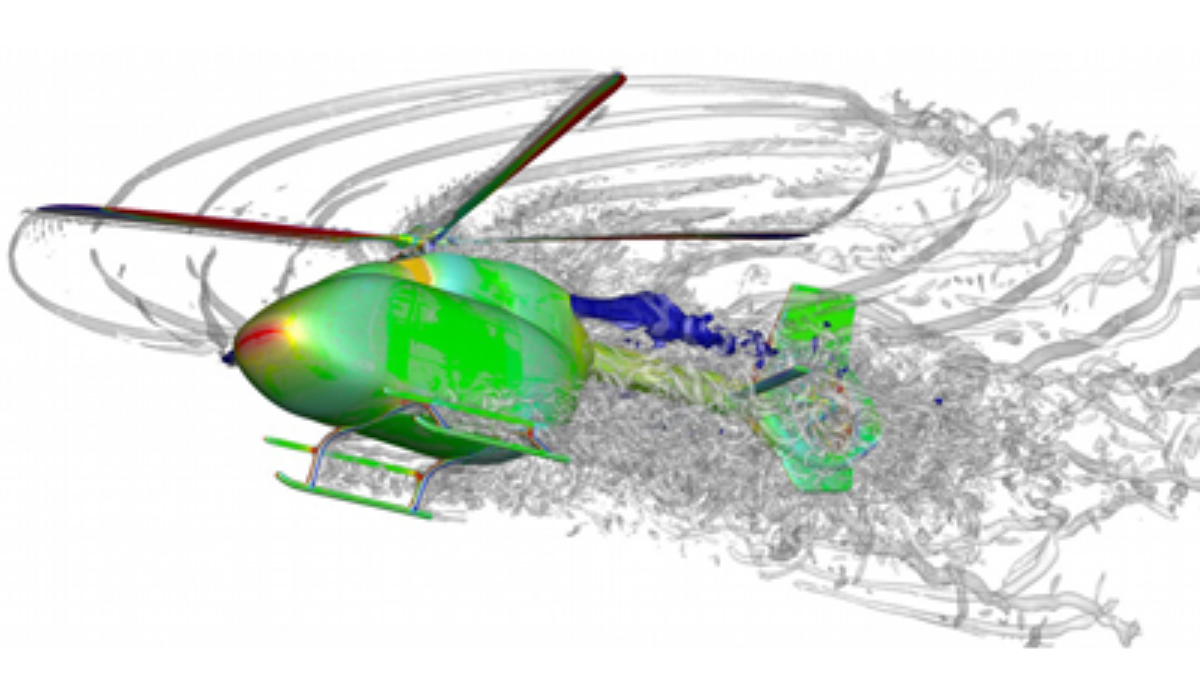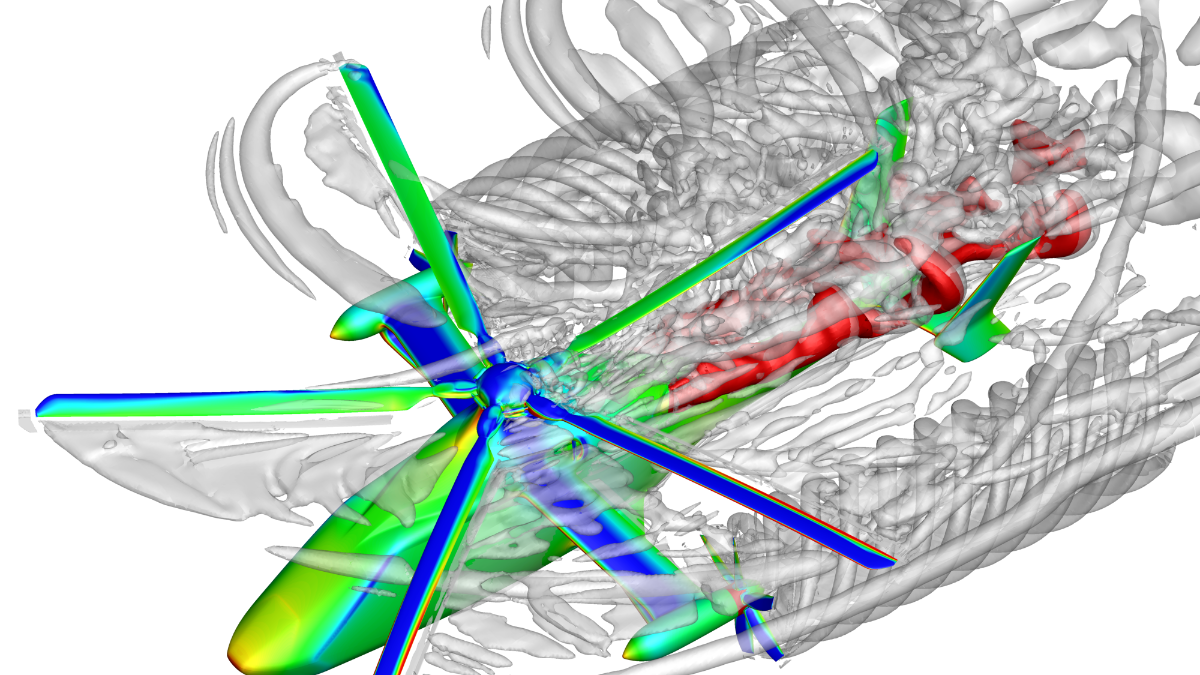The working group is primarily concerned with the high-precision CFD simulation of aircraft with rotating components, mainly helicopters. Due to the elasticity of the rotor blades, which must be taken into account for reliable results, flow-structure coupling is used for this purpose. The flow solver used is FLOWer, which was originally developed by the DLR and has since been continuously expanded and improved at the IAG to meet the requirements of helicopters. In addition, the aeroacoustic evaluation of the generated flow simulations is carried out with a tool developed at the IAG, which allows detailed analyses of the underlying sound mechanisms.
In close cooperation with the High Performance Computing Center Stuttgart, an internationally recognized and highly productive simulation framework has been developed over the last two decades, with which robust and reliable results can be generated for a large number of aerodynamic, flight mechanical and aeroacoustic issues relating to helicopters and other rotorcraft configurations.
Helicopters
The classic helicopter configuration with a main rotor and a tail rotor is still the focus of research activities. For almost two decades, the coupled simulation of complete configurations in free flight has been state of the art, in which the aerodynamic forces on the rotor are consistently converged with the deformation of the blades. In addition, the control and attitude angles are adjusted in the trim so that the desired stationary flight condition is achieved. This enables reliable predictions to be made about performance, loads and noise.
More recent developments also allow the prediction of vibrations in different flight conditions via an elastic consideration of the fuselage, the increasingly better reproduction of the aeroacoustic noise components and now also the simulation of maneuvers in extension of the previously considered stationary flight conditions. This allows completely new areas of flight safety and critical flight conditions to be addressed.
Innovative rotorcraft configurations
In addition to the classic helicopter, other configurations have become the focus of research in order to overcome existing limitations of the proven concept and open up new applications. These include compound helicopters such as the RACER from Airbus Helicopters, which achieves significantly higher speeds with additional wings and propulsion propellers, thus enabling a greater radius of action.
However, new, disruptive layouts, often with several rotors, promise even greater potential for transportation in populated areas, under the name Urban Air Mobility, commonly known as air cabs. Several hundred concepts are being developed worldwide in various stages of maturity. As these are still comparatively new configurations, fundamental research questions still need to be clarified before they can be used safely and efficiently on a large scale. The same tools are being used for this as have been tested many times for helicopters and have delivered successful results.
Distributed drives
The urgent need for efficient aviation technologies with reduced emissions requires new concepts. Propeller drives, which can be distributed along the wings and improve efficiency through lower circular surface loading and positive interaction effects with the wing, are ideal for short-haul flights. Electric drives are locally emission-free and allow this distributed thrust generation with high efficiency. However, emissions also include noise development, which must not increase unacceptably with this optimization. In close cooperation with the Aircraft Aerodynamics working group, which focuses on aerodynamic issues, the aeroacoustic phenomena resulting from the close interaction between the propellers themselves and between the propellers and the wing are being investigated.
apl. Prof. Dr. Manuel Keßler

Manuel Keßler
apl. Prof. Dr.Deputy Head of Institute / Head of working group Helicopters and Aeroacoustics


